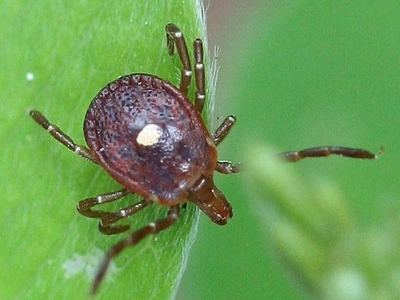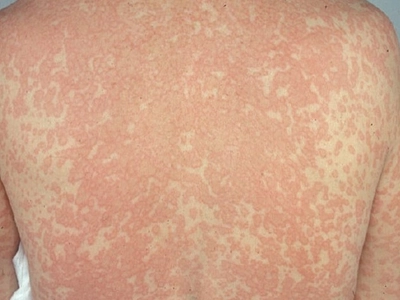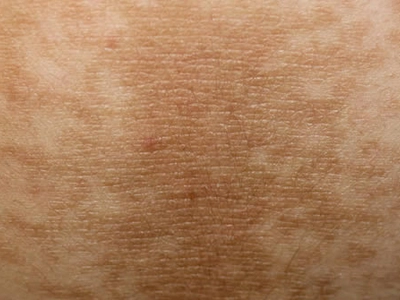Bitten by the Lone Star Tick? Here’s What You Need to Know—and Do Immediately
You found a tick with a distinctive white spot crawling on your child's skin after a nature walk. Your heart races as you realize this isn't just any tick—it's the notorious Lone Star tick, and that innocent-looking white spot could spell serious trouble for your family's health.
THIS IS NOT A DRILL. Every second counts.
That White Spot Is Your Warning Sign
The Lone Star tick (Amblyomma americanum) is instantly recognizable by the single white spot or "star" on the back of adult females. This isn't just a harmless identifying mark—it's nature's warning label on one of the most dangerous ticks in North America.
Unlike other ticks that might take days to transmit disease, the Lone Star tick is an aggressive biter that can alter your life in ways you never imagined. That white spot you're staring at represents a tick species responsible for:
- Alpha-gal syndrome - A life-threatening red meat allergy that could force you to give up burgers, steaks, and bacon forever
- STARI (Southern Tick-Associated Rash Illness) - A mysterious condition that mimics Lyme disease
- Ehrlichiosis - A potentially fatal bacterial infection
- Tularemia - A serious bacterial disease that can kill
- Heartland virus - A newly discovered virus with no known treatment
What You Must Do RIGHT NOW
STEP 1: DO NOT PANIC, BUT ACT FAST
Time is your enemy. The longer that tick remains attached, the higher your risk of disease transmission. But rushing the removal process could make everything worse.
STEP 2: GATHER YOUR TOOLS
- Fine-tipped tweezers (NOT your fingers, NOT nail polish, NOT a hot match)
- Rubbing alcohol or antiseptic
- A clean container or plastic bag
- Camera or phone for documentation
STEP 3: THE PROPER REMOVAL TECHNIQUE THAT COULD SAVE YOUR LIFE
- Grasp the tick as close to the skin as possible with your tweezers
- Pull upward with steady, even pressure—NO twisting or jerking motions
- Don't squeeze the tick's body—this forces infected fluids into the bite wound
- Clean the bite area and your hands thoroughly with rubbing alcohol
- Save the tick in a sealed container—you may need it for identification and testing
CRITICAL WARNING: If the tick's mouth parts break off in the skin, remove them with tweezers. If you can't remove them easily, leave them alone and let the skin heal.
The Terrifying Reality of Alpha-Gal Syndrome
Here's what medical professionals don't always tell you: a single Lone Star tick bite can trigger alpha-gal syndrome, making you violently allergic to red meat for the rest of your life.
Imagine never being able to eat:
- Beef, pork, or lamb
- Dairy products
- Gelatin-containing foods
- Even some medications with mammalian-derived ingredients
The reaction can occur 3-6 hours after eating red meat and ranges from hives and digestive issues to full anaphylactic shock that requires emergency intervention. This isn't temporary—for many people, it's permanent.
Warning Signs That Demand Immediate Medical Attention
GET TO A DOCTOR IMMEDIATELY if you experience ANY of these symptoms within 1-4 weeks of the tick bite:
STARI Symptoms:
- Expanding red rash around the bite site (similar to Lyme disease's bullseye rash)
- Fatigue that doesn't improve with rest
- Fever and chills
- Headache
- Joint and muscle aches
Ehrlichiosis Symptoms (5-14 days after bite):
- High fever (often over 102°F)
- Severe headache
- Muscle aches
- Nausea and vomiting
- Confusion
- Red eyes
Tularemia Symptoms:
- Sudden onset fever
- Swollen lymph nodes
- Skin ulcer at bite site
- Dry cough
- Chest pain
Alpha-Gal Syndrome Symptoms (3-6 hours after eating red meat):
- Severe abdominal pain
- Diarrhea and vomiting
- Hives or skin rash
- Difficulty breathing
- Drop in blood pressure
- Swelling of lips, throat, tongue, or eyelids
The Medical Response You Need to Demand
DON'T LET YOUR DOCTOR BRUSH YOU OFF. Many physicians are unfamiliar with Lone Star tick diseases, especially alpha-gal syndrome. You may need to:
- Request specific blood tests for ehrlichiosis, tularemia, and alpha-gal antibodies
- Insist on documentation of the tick bite in your medical records
- Ask about prophylactic antibiotics if you're in a high-risk area
- Demand a referral to an infectious disease specialist if symptoms develop
- Consider allergy testing for alpha-gal syndrome 3-6 months post-bite
Prevention: Your Family's Life Depends on It
Lone Star ticks are expanding their range due to climate change and are now found across the southeastern and eastern United States, with populations moving north and west every year.
Essential Prevention Strategies:
- Use EPA-registered insect repellents containing DEET, picaridin, or permethrin
- Wear long pants and long-sleeved shirts when hiking or camping
- Treat clothing and gear with 0.5% permethrin
- Stay on trails and avoid brushy areas where ticks wait for hosts
- Perform daily tick checks on yourself, children, and pets
- Shower within 2 hours of outdoor activities
- Use a hand mirror to check hard-to-see areas
The Uncomfortable Truth About Lone Star Tick Diseases
Here's what the medical establishment doesn't want you to know: there are no vaccines for most Lone Star tick diseases, and treatments are often inadequate. STARI, for example, doesn't respond to the antibiotics typically used for Lyme disease. Alpha-gal syndrome has no cure—only strict dietary avoidance.
The healthcare system is unprepared. Many emergency rooms lack proper testing capabilities, and most physicians receive minimal training on tick-borne diseases during medical school.
Your Action Plan Starting Today
- Educate your entire family about tick identification and proper removal techniques
- Stock your first aid kit with fine-tipped tweezers and antiseptic
- Create a tick removal protocol and practice it with your family
- Establish a relationship with a physician knowledgeable about tick-borne diseases
- Document any tick encounters with photos and detailed notes
- Consider professional landscape management to reduce tick habitat around your property
That white spot on the Lone Star tick isn't just an identifying feature—it's a warning that could save your life. The next time you see one, you'll know exactly what you're dealing with and exactly what to do.
Remember: Knowledge is your best defense, but quick action is your only hope.




